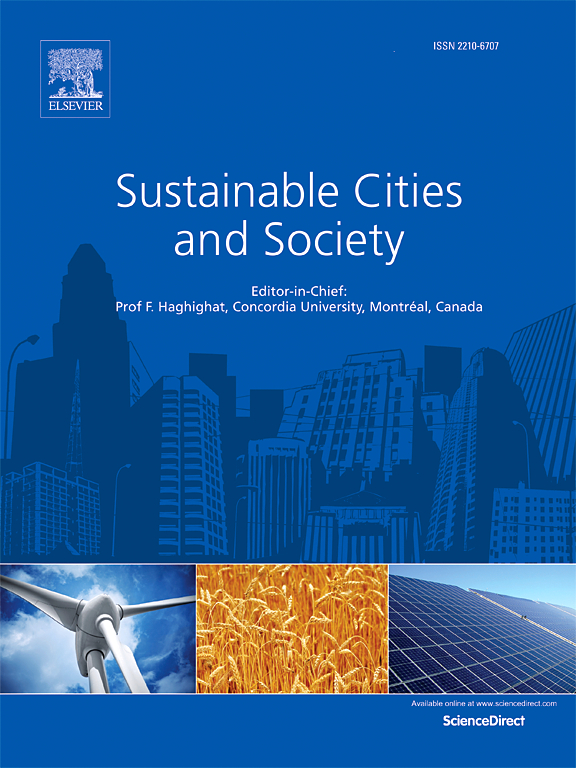Impacts of land surface temperature and ambient factors on near-surface air temperature estimation: A multisource evaluation using SHAP analysis
IF 10.5
1区 工程技术
Q1 CONSTRUCTION & BUILDING TECHNOLOGY
引用次数: 0
Abstract
Near-surface air temperature (Ta) is a vital indicator depicting urban thermal environments and sustainability. Machine learning (ML) models have been increasingly adopted for Ta estimation. However, there is still an urgent need to investigate how daytime and nighttime Ta are impacted by multisource ambient physical and anthropogenic factors across various environments. To this end, geospatial datasets incorporating MODIS-derived land surface temperature and 29 ancillary factors were employed to estimate Ta from 292 stations in China using ML modeling (training: 2017–2020). The optimal LightGBM-based models outperformed and obtained testing RMSEs of 3.03 °C (daytime) and 2.64 °C (nighttime) in 2021. Distinct spatiotemporal patterns in stations’ Ta prediction were observed, with coastal areas showing better daytime estimates and northern mid-temperate regions exhibiting lower nighttime accuracy. Comprehensive and individual models-based SHapley Additive exPlanations (SHAP) interpretation highlights the importance of incorporating macroscale meteorological backgrounds and terrain-related variables for Ta estimation improvement, as well as the critical impact of local urban morphology and anthropogenic indicators. This study has the potential to offer suggestions on ambient factors for improving Ta modeling and future urban heat island-related planning within specific regional and local climatical contexts.
求助全文
约1分钟内获得全文
求助全文
来源期刊

Sustainable Cities and Society
Social Sciences-Geography, Planning and Development
CiteScore
22.00
自引率
13.70%
发文量
810
审稿时长
27 days
期刊介绍:
Sustainable Cities and Society (SCS) is an international journal that focuses on fundamental and applied research to promote environmentally sustainable and socially resilient cities. The journal welcomes cross-cutting, multi-disciplinary research in various areas, including:
1. Smart cities and resilient environments;
2. Alternative/clean energy sources, energy distribution, distributed energy generation, and energy demand reduction/management;
3. Monitoring and improving air quality in built environment and cities (e.g., healthy built environment and air quality management);
4. Energy efficient, low/zero carbon, and green buildings/communities;
5. Climate change mitigation and adaptation in urban environments;
6. Green infrastructure and BMPs;
7. Environmental Footprint accounting and management;
8. Urban agriculture and forestry;
9. ICT, smart grid and intelligent infrastructure;
10. Urban design/planning, regulations, legislation, certification, economics, and policy;
11. Social aspects, impacts and resiliency of cities;
12. Behavior monitoring, analysis and change within urban communities;
13. Health monitoring and improvement;
14. Nexus issues related to sustainable cities and societies;
15. Smart city governance;
16. Decision Support Systems for trade-off and uncertainty analysis for improved management of cities and society;
17. Big data, machine learning, and artificial intelligence applications and case studies;
18. Critical infrastructure protection, including security, privacy, forensics, and reliability issues of cyber-physical systems.
19. Water footprint reduction and urban water distribution, harvesting, treatment, reuse and management;
20. Waste reduction and recycling;
21. Wastewater collection, treatment and recycling;
22. Smart, clean and healthy transportation systems and infrastructure;
 求助内容:
求助内容: 应助结果提醒方式:
应助结果提醒方式:


